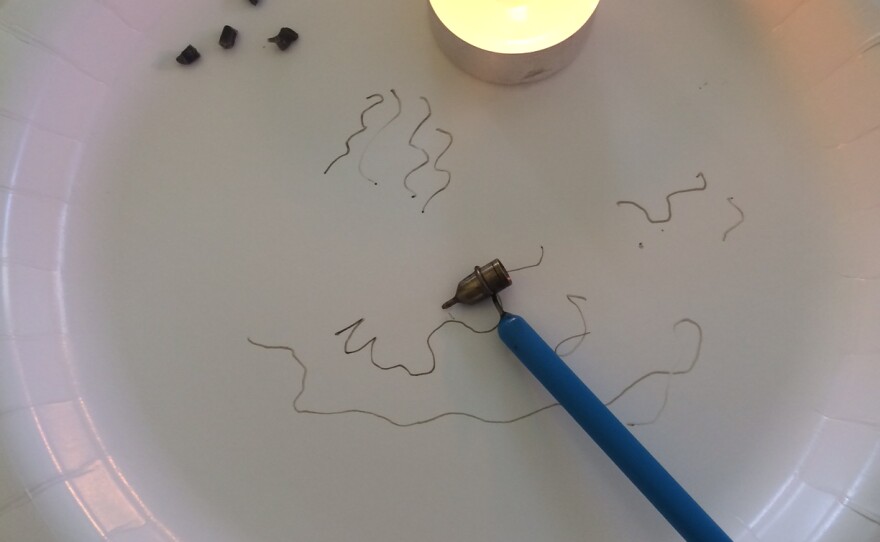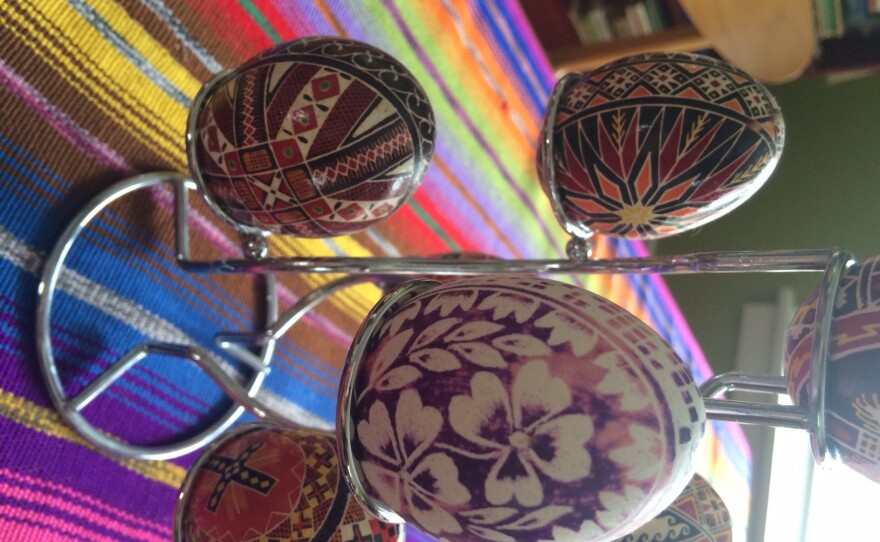There are many different ways to decorate Easter eggs.
Usually in America no matter how you choose to decorate the eggs they are temporary and seasonal. But one Charlotte resident says they can be more than just a craft for kids. They can be art. Sarah Delia has more.
Step into Carol Sawyer’s kitchen in the spring and you’ll be met by a warm breeze. The windows are open and sunlight is pouring in.
She has everything you’d expect to see in a kitchen with some noticeable differences: glass Tostitos jars filled with dye (not salsa), thin rods of beeswax, and a syringe sitting by the sink.
These aren’t the ingredients and tools needed for a baking recipe. These are the instruments for art making. Her canvas is a white egg.
"People don’t create much these days that is tangible. We do a lot of work on computers and media but to take a white egg and make something really lovely, is something people don't do every day," said Sawyer.
Since the late 90’s Carol’s been making pysanky eggs, Ukrainian Easter Eggs that use beeswax and bright dye to create intricate designs on the surface of eggs. She keeps a collection of her favorites in a cabinet that she’s made and has been gifted over the years.
When spring time rolls around, Carol breaks out her supplies. She invites friends over to teach them about the tradition she adopted.
"Most folks are used to the super market Easter egg dyes which are fairly bland by comparison. There’s something magical about layering these dyes and then ending with a black background which really makes the colors pop," she said.
But before you get to dying, you have to prepare the egg by emptying it. She uses a small nail like a drill bit to create a hole. Then she uses the syringe to inject air.
The egg dries for a few days and a small wax plug is placed in the hole.
She uses a stylus called a kistka, an instrument used to apply the beeswax onto the egg. When the beeswax is placed into the kistka she lights another key tool to this whole process, a small candle.
The kistka is held to the flame letting the wax turn liquid then like you would with a pen, carefully draw onto the egg.
It’s harder than it sounds. You have to think backwards, almost like creating a coloring book in reverse.
The wax is a gray and you have to have a steady hand on the bumpy surface of the egg.
Once the basic outline is done it’s time to dye. This process of going back and forth between the dye and beeswax application is repeated numerous times. Then the egg is dropped into the last dye color (black) which will be the background.
Patience is key here. The longer you keep the egg in the black dye, the darker the background which means all the brightly colored parts of the egg that are protected by the wax will be that much more bold.
The egg is patted dry the wax plug removed. Then, the egg is held at an angle to the candle’s flame. The remaining wax drips right off leaving the egg smooth and shiny.
















